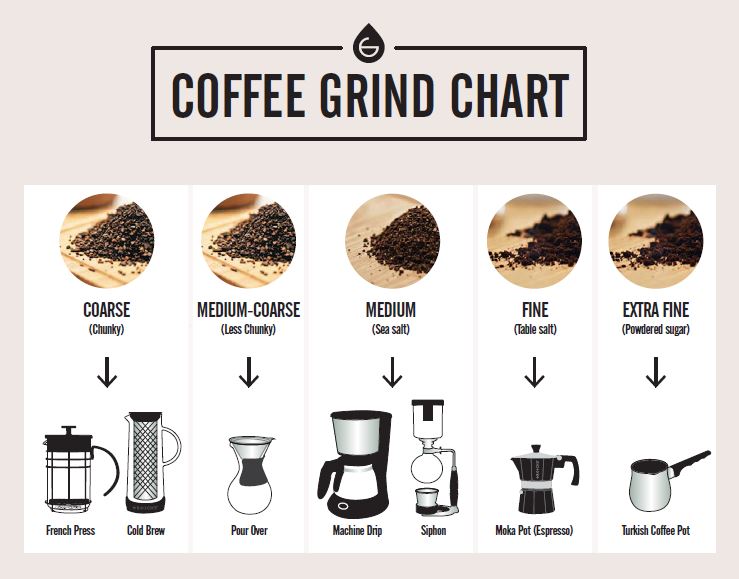When I began my journey into the realm of home espresso, I quickly understood that grind size plays as pivotal a role as the beans or the espresso machine itself. The grind size affects both the taste and texture of the espresso, and after many trials and adjustments, I gained some crucial insights into what makes the perfect grind. Discover the innovative features in the DeLonghi Magnifica Evo review
Espresso is adored for its intense, concentrated flavor, but crafting that ideal shot requires a delicate balance of factors: high-quality beans, a dependable espresso machine, accurate water temperature, the correct pressure, and, perhaps most importantly, the right grind size. If your grind is off—either too coarse or too fine—you could end up with a bitter or sour shot that misses the mark. Learn about the timeless design in the DeLonghi Magnifica S review
So, what grind size is ideal for making espresso at home? Here’s what I’ve discovered on my journey. Explore our top picks in the Best Automatic Espresso Machine review
Why Grind Size is Crucial
During brewing, water moves through the coffee grounds, extracting the flavor compounds that give espresso its distinct taste, aroma, and body. The grind size plays a critical role in determining how well extraction occurs. Unlike brewing methods like pour-over or French press, espresso demands a fine grind—but finding the precise level of fineness is the real art. Find the perfect machine to beat the heat in the Best Iced Coffee Maker review
Too Coarse: Water flows too quickly, causing under-extraction, resulting in a weak and sour taste.
Too Fine: Water struggles to pass through, leading to over-extraction, which makes for a bitter, overpowering shot.
Achieving the Ideal Grind
After considerable experimentation, I found that the perfect grind size for espresso resembles fine sand. It should not be as powdery as flour but also shouldn't feel as gritty as table salt. When rubbed between your fingers, the grind should have a slightly textured but cohesive feel. Dive into the best options for making lattes in the Best Latte Maker review
A burr grinder is essential for maintaining consistent grind quality. Unlike blade grinders, which result in uneven grinds, burr grinders ensure the beans are crushed evenly, contributing to consistent extraction and a richer espresso flavor.

Fine-Tuning the Grind for Your Espresso Machine
Every espresso machine has its unique characteristics, so adjusting the grind to match your specific setup is key. Here are some general guidelines that I follow:
Shot Brews Too Quickly (<20 Seconds): The grind is likely too coarse.
Shot Brews Too Slowly (>30 Seconds): The grind is too fine.
Ideally, I aim for a shot that pulls in about 25 to 30 seconds. Moreover, switching to different beans often requires slight tweaks to the grind settings, so I make minor adjustments to ensure the grind suits each new roast.
Tips for Consistent Grind Quality
Consistency is the foundation of great espresso. Here are some additional elements that I’ve found crucial for consistent quality:
Use Fresh Beans: Coffee beans are at their best within two weeks of roasting, providing optimal flavor and crema.
Master the Tamping Technique: Apply even pressure when tamping the grounds—compact them well without overdoing it. Uneven tamping can cause channeling, where water finds an easier path through the grounds, leading to poor extraction.
Measure Your Coffee Dose: A coffee scale is invaluable for accuracy. I typically use between 18 to 20 grams of coffee for a double shot to ensure consistency every time.
Experimenting with Grind Sizes for Different Flavors
Although a fine grind is standard for espresso, there is room to adjust depending on your taste preferences. Small changes to the grind size can bring out different flavor nuances:
Lighter Roasts: A slightly coarser grind can help balance acidity and highlight the natural sweetness of the beans.
Darker Roasts: A finer grind may emphasize the rich, chocolatey, and nutty notes.
Common Mistakes to Avoid
Over time, I’ve learned to avoid a few common pitfalls that can easily derail the perfect shot:
Grinding Too Early: Freshness is key. Coffee loses its aroma and flavor quickly after grinding, so it’s best to grind only what you need right before brewing.
Neglecting Grinder Maintenance: Regular cleaning of the grinder prevents old grounds and oils from contaminating the flavor of your espresso.
Ignoring Roast Dates: Even with the perfect grind, stale beans (past 1-2 weeks after roasting) will lead to a flat and lackluster shot.

Conclusion: Mastering the Art of Home Espresso
Perfecting the grind for home espresso is a rewarding journey that requires patience and a willingness to learn. Making excellent espresso begins long before pulling the shot—it's about selecting high-quality beans, fine-tuning the grind, and refining every step in the process.
With dedication, I've learned to craft espresso at home that rivals the quality of my favorite cafes. There is a deep satisfaction in mastering this craft and enjoying a well-crafted espresso shot in the comfort of your own kitchen.
For anyone embarking on this journey, I recommend embracing the experimentation. Adjust grind sizes, observe how your machine responds, and learn from each shot. With time, you will discover the perfect balance and enjoy rich, flavorful espressos that suit your taste perfectly.
